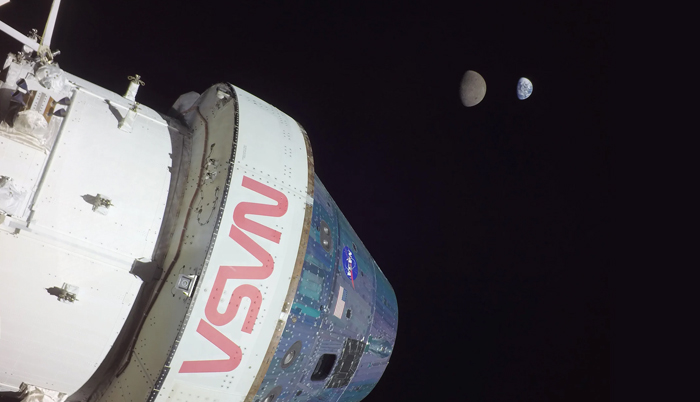![]() Home > Space & Science
Home > Space & Science
NASA's Orion Photographed The Earth And Moon From A Quarter-Million Miles Away

NASA Johnson, Flickr
![]() November 30th, 2022 | 13:16 PM |
November 30th, 2022 | 13:16 PM | ![]() 602 views
602 views
WASHINGTON, D.C., UNITED STATES
The spacecraft snapped the photo at a record-setting distance from home.
The Orion spacecraft's record-setting distance from Earth made for stunning photography, apparently. NASA has shared a photo taken by the Artemis I vehicle on Monday showing both Earth and the Moon in the background. Much like some Apollo photography or Voyager 1's "Pale Blue Dot," the picture puts humanity's home in perspective — our world is just one small planet in a much larger cosmos.
Orion took the snapshot around its maximum distance from Earth of 268,563 miles. That's the farthest any human-oriented spacecraft has traveled, beating even Apollo 13's record of 248,655 miles from 1970. Notably, Artemis I represents the first time explorers intended to travel this far out — Apollo 13 only ventured so far from Earth because NASA's emergency flight plan required the Moon as a slingshot.
Ars Technica notes that this early Artemis flight has so far surpassed NASA's expectations. While the mission team has only completed 31 out of 124 core objectives so far, it's adding goals like extended thruster tests. About half of the remaining activities are in progress, with the rest largely dependent on returning to Earth.
Orion is expected to splash down off the San Diego coast on December 11th. The Artemis program has dealt with numerous delays, and now isn't expected to land humans on the Moon until 2025 or 2026. NASA originally hoped for a lunar landing in 2024. Still, Artemis I's current performance suggests the space agency's efforts are finally paying off.
Source:
courtesy of ENGADGET
by Jon Fingas
If you have any stories or news that you would like to share with the global online community, please feel free to share it with us by contacting us directly at [email protected]